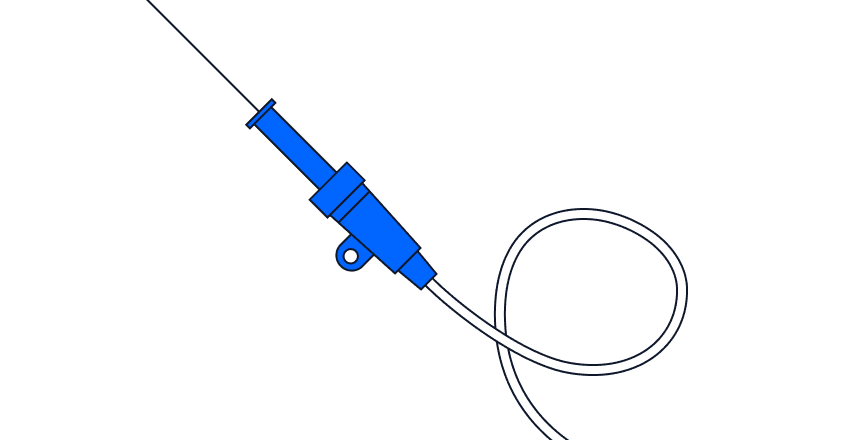Preparing for an MRI: What to Wear, What to Avoid and Other Tips
July 25, 2024
Read More
Dr. Ania Kielar, vice-president of the Canadian Association of Radiologists and vice-chair of the University of Toronto’s department of medical imaging, explains everything patients need to know about angiograms
What is an angiogram?
An angiogram encompasses a series of diagnostic tests that use X-rays and a contrasting agent, or dye, to generate images of the body’s blood vessels. During the procedure, a long tube called a catheter may be inserted into an artery — usually in the arm, groin or neck — and threaded through blood vessels to help diagnose any issues. “They are usually done by interventional radiologists, which are radiologists who perform more procedures,” says Dr. Kielar. “You go into a room that looks a little like an operating room but it’s got a very fancy machine that moves around you. They may be able to fix things on the spot but they are basically looking at your blood vessels.”
What is a contrast agent?
A contrast agent, or dye, is required for a coronary angiogram — the most common form of angiogram — to make blood vessels more visible to X-rays. Patients may be required to have a blood test prior to the procedure to ensure they are not allergic to the agent and that their blood is able to clot properly.
What does an angiogram show?
Angiograms are extremely useful for detecting the source of abnormalities in blood vessels, including any narrowing or blockages of the body’s arteries. They can help diagnose a wide range of issues, including heart disease, stroke (or the risk of stroke), kidney and liver issues and many forms of vascular disease. “They can try to open up a vessel if its closed or they can put in wires, tubes or stents,” Dr. Kielar says. “It really just depends on what the issue is.”
How long does an angiogram take?
Generally between 30 minutes and two hours. “It just depends on what they’re doing,” Dr. Kielar says.
How can patients prepare for an angiogram?
Clothing/jewelry — Patients will be required to change into a gown before the procedure but angiograms can be invasive tests, so it’s best to have loose-fitting, comfortable clothing to change into afterwards. Jewelry and other valuables should be left at home.
Dietary requirements — “You will probably be asked not to eat for a few hours beforehand if not the night before,” Dr. Kielar says. “They’ll give specific instructions but it really depends on the procedure.”
Bloodwork — Blood tests may be required before the procedure to ensure a patient does not have an allergy to the contrast agent and that their blood has the ability to properly clot.
Medications — Be sure to follow your doctor’s instructions prior to an angiogram as some medications must not be taken before certain procedures.
Support — Patients should arrange to have someone take them to and from their appointment.
Is there anything patients should do after an angiogram?
Patients will typically be monitored for a few hours following the procedure and given instructions to take home with them. They should avoid any strenuous activity after their angiogram and drink plenty of water to help clear the contrast agent from their system.
How long does it take for results to come back?
Results generally take a few days — around the same amount of time as a CT scan or an MRI, according to Dr. Kielar. “We do the procedure, we write the report and we sign off, usually by the end of the day but it can take a couple of days depending on what’s happening. Then the doctor will get it a day or two later. A lot of patients can now read their own reports online. You just have to remember as a patient that it’s going to be written in medicalese.”
Are there any other concerns or risks that accompany an angiogram?
Any procedure performed this close to the heart or brain has some level of risk but major issues are rare and will be discussed with patients ahead of time. Potential complications include stroke, heart attack, kidney damage, infection and excessive bleeding. “Generally speaking, nothing that we do is particularly high risk but I think people at least need to know what they’re getting into,” Dr. Kielar says. “For example, if you’re having something done in your brain, for an aneurism, they may intubate you like they would for a regular surgery. Whereas for most other things, it’s almost nothing.”
How has the pandemic changed the way angiograms are performed?
Like all scans performed by a radiologist, wait times for an angiogram have generally gone from bad to worse, Dr. Kielar says. Interventional radiologists — the professionals who conduct angiograms — have been particularly busy over the past two years. “These guys have probably had the most work required because they also put in chest tubes and pick lines and a lot of people who have COVID need a lot of long-term medication. They have been doing a ton of work for a very long time during COVID.”